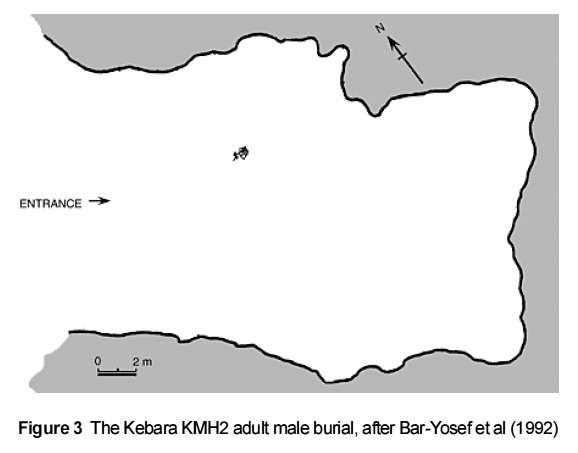Located on the western escarpment of Mount Carmel, Kebara Cave has two important components, Middle Paleolithic Aurignacian and Mousterian, and Epi-Paleolithic Natufian. First occupied about 60 000 years ago, the 4 metre thick cave deposit has Levallois stone artifacts, many many hearths, and midden deposits.
The oldest occupations at Kebara Cave are thought to be associated with the Middle Paleolithic Aurignacian and Mousterian traditions, and range between 60 000 and 48 000 years ago. These oldest levels yielded thousands of animal bones – primarily mountain gazelle and Persian fallow deer – many of the bones with cutmarks, as well as burned bones, hearths, ash lenses and lithic artefacts leading researchers to believe Kebara Cave was a long-term occupied base camp for its Neanderthal residents. Also identified in the MP layers of Kebara cave was a nearly complete skeleton of a Neanderthal, known as KMH 2 or Kebara

